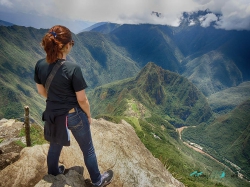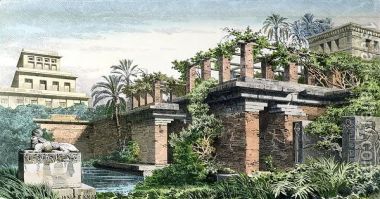ABOUT Göbekli Tepe
Göbekli Tepe (Turkish: [ɟœbecˈli teˈpe], "Potbelly Hill") is an archaeological site in the Southeastern Anatolia Region of Turkey approximately 12 km (7 mi) northeast of the city of Şanlıurfa. The tell (artificial mound) has a height of 15 m (50 ft) and is about 300 m (1,000 ft) in diameter. It is approximately 760 m (2,500 ft) above sea level.
The tell includes two phases of use, believed to be of a social or ritual nature by site discoverer and excavator Klaus Schmidt, dating back to the 10th–8th millennium BCE. During the first phase, belonging to the Pre-Pottery Neolithic A (PPNA), circles of massive 'T'-shaped stone pillars were erected – the world's oldest known megaliths.More than 200 pillars in about 20 circles are known (as of May 2020) through geophysical surveys. Each pillar has a height of up to 6 m (20 ft) and weighs up to 10 tons. They are fitted into sockets that were hewn out of the local bedrock. In the second phase, belonging to the Pre-Pottery Neolithic B (PPNB), the erected pillars are smaller and stood in rectangular rooms with floors of polished lime. The site was abandoned after the Pre-Pottery Neolithic B (PPNB). Younger structures date to classical times.
The details of the structure's function remain a mystery. The excavations have been ongoing since 1996 by the German Archaeological Institute, but large parts still remain unexcavated. In 2018, the site was designated a UNESCO World Heritage Site.
The tell includes two phases of use, believed to be of a social or ritual nature by site discoverer and excavator Klaus Schmidt, dating back to the 10th–8th millennium BCE. During the first phase, belonging to the Pre-Pottery Neolithic A (PPNA), circles of massive 'T'-shaped stone pillars were erected – the world's oldest known megaliths.More than 200 pillars in about 20 circles are known (as of May 2020) through geophysical surveys. Each pillar has a height of up to 6 m (20 ft) and weighs up to 10 tons. They are fitted into sockets that were hewn out of the local bedrock. In the second phase, belonging to the Pre-Pottery Neolithic B (PPNB), the erected pillars are smaller and stood in rectangular rooms with floors of polished lime. The site was abandoned after the Pre-Pottery Neolithic B (PPNB). Younger structures date to classical times.
The details of the structure's function remain a mystery. The excavations have been ongoing since 1996 by the German Archaeological Institute, but large parts still remain unexcavated. In 2018, the site was designated a UNESCO World Heritage Site.








